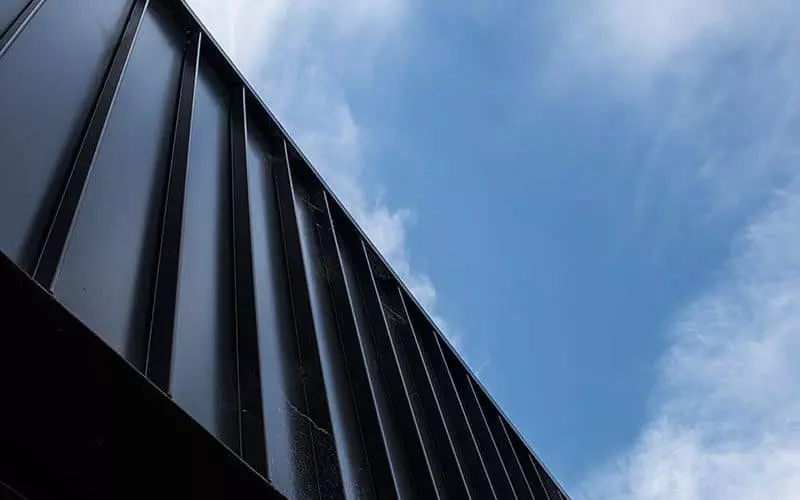Let’s face it, very few people will claim they enjoy cleaning. However it’s a necessary part of life.
Maintaining a home or commercial building can be time consuming, labour intensive and costly. Long term cleaning requirements should be taken into consideration before final material specifications are made. Building care is not solely the responsibility of home and building owners. Maintenance should be reviewed by architects and builders when specifying facade materials. Not all facades are equal and not all building management teams or residents have the same level of flexibility and resources to dedicate towards cleaning regimes.
Metal cladding is a relatively low maintenance solution for both commercial and residential developments. Zinc and copper are natural alloys. They require no additional coating and therefore don’t need re-painting or polishing. Pre-finished material options, such as COLORBOND® Steel and Vestis Aluminium are just as they sound, pre-coated. Once produced, coated steel and aluminium don’t require re-painting. Because metal roof and wall cladding materials don’t demand the usual maintenance associated with other facade products, cleaning schedules are simple and achievable.
Why maintain your metal facade?
While metal cladding materials are long lasting, they are not dirt resilient – nothing is. Surface dirt can impact the integrity of metal cladding applications if left for extended periods of time. Surface dust can be a major concern when cladding is located near the ocean. In addition to harmful dirt and harsh atmospheric conditions, spiderwebs and other bug debris can also collect in the express joins or seams of a system. While cobwebs aren’t harmful, as seen in the image above, they can be unattractive and reduce the visual impact of metal cladding facades.
How to clean metal cladding panels
- Identify the type of dirt you are attempting to remove. For example: salt spray, industrial air chemicals, cobwebs, bird droppings, general dust, dirt from the air, rain spots.
- Nominate your cleaning method. There are two main ways to clean a cladding system. For dry dirt such as dust from the air, rain spots, and cobwebs, take a soft bristle broom or brush and wipe the facade. This should remove most visible dirt. If you’re removing salt spray or droppings, it’s best to start with a dry wash. Use a broom or brush as noted above. Water can be applied after surface dust has been removed. Never use harsh chemicals to clean metal, reactions may occur causing natural alloys such as zinc and copper to alter in appearance. In some cases chemical cleaners can remove coated layers on pre-finished steel and aluminium. Water is the safest and most effective option.
- Pay particular attention if your cladding application is not exposed to rainfall (under a pergola or covered deck) and located in a harsh atmospheric environment. Without regular rain cleaning, harmful dirt capable of eroding the base metal may accumulate.
How often you should clean?
Material producers or stockists make cleaning recommendations. Most alloy suppliers and/or manufacturers issue maintenance documents with suggested methods and cleaning intervals. The required cleaning frequency is often subject to project location and exposure to rainfall.
Contact our team
If you’re considering metal cladding panels on your next project, our team are here to assist and answer any questions you have. From metal samples to technical project assistance and specification guidance, we’re happy to discuss all aspects of sheet metal cladding panels, from manufacturing and fabrication through to installation and maintenance. To get in touch and learn more, click the button below.
Contact us


